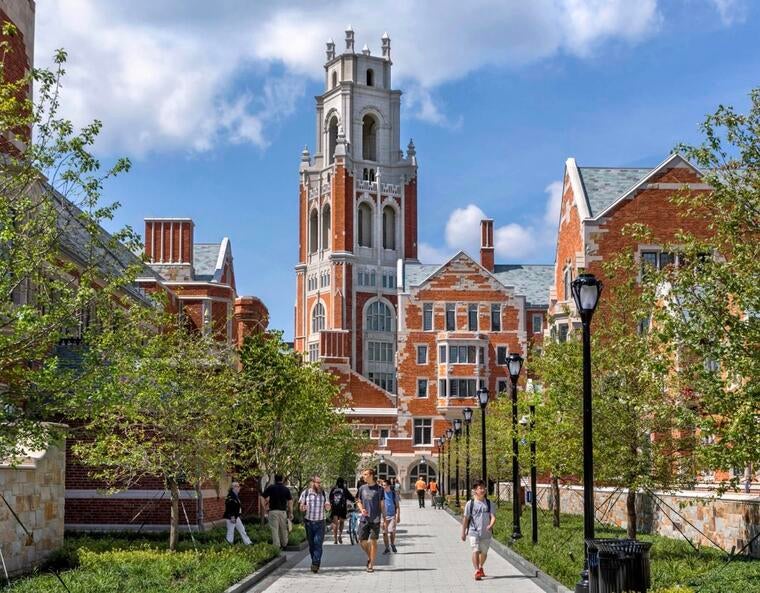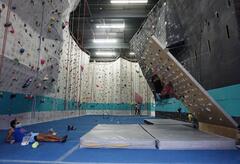
When I applied to Yale, I remember being particularly interested in living in a residential college. Although I was not quite sure what that entailed, all I knew was that residential colleges played a large role in student life at Yale and were different from traditional dorm life as I knew it. Luckily after four years, I believe I am qualified to explain what a residential college is, from the spaces that make up a residential college to the people involved within a residential college, and how they are integral to student life.
Before I get into what makes up a residential college, I want to briefly discuss the residential colleges at Yale. As you may or may not already know, Yale has 14 residential colleges for undergraduates. While first-year students from Timothy Dwight, Silliman, Benjamin Franklin, and Pauli Murray College get to live in their respective colleges, all other first-year students from the remaining 10 residential colleges get to live on the Old Campus.
While incoming students are randomly assigned to residential colleges, from experience, I know that incoming first-years and prospective students already have their sights set on being placed into specific residential colleges. Even if the differences in architecture, dining hall food, people, traditions, amenities, and location may result in different residential preferences, the colleges are similar on a macro level. All colleges contain the spaces below.
The Buttery - The Buttery is a late-night snack shop located in the basement of your residential college. All butteries are student-run and operated, have their unique menu items, and offer delicious quick bites for cheap.
Common Room - This is essentially the living room for every residential college. Typically residential college common rooms are located right by the dining hall. You can always find a piano, comfy couches, and lost water bottles in every residential college common room.
Dining Hall - There is a dining hall in every residential college and I would even go as far as saying that it is the heart of every residential college. While some dining halls may offer pizza, oat milk soft serve, or frozen yogurt, the dining halls essentially have the same items and by peak lunch and dinner hours, expect to hear and participate in interesting and random conversations with friends.
Student Kitchen - Every residential college also has a student kitchen. Even though all students living on campus are required to be on a meal plan, the student kitchen allows students to bake with friends or host a wholesome potluck.
Indoor Gym - Even though Payne Whitney Gym has everything a gym rat would want and more, I prefer the convenience of my residential college gym. From free weights, and various cardio machines, to squat racks and more, you are guaranteed to get a good workout without having to trek to Payne Whitney.
Laundry Room - The laundry room is the bane of my existence, especially since I live on the fourth floor and it is located in the basement of my residential college. Equipped with washers and dryers, the laundry room does what it needs to do. Unfortunately, it can get crowded during the weekends and after classes so make sure to remove your clothes from the washer and dryer whenever they are done before someone does it for you.
Courtyard - While often unused during the winter months, it is an integral part of every residential college. During the warmer months, expect to see students playing volleyball, doing classwork, and simply relaxing in the courtyard. Also, expect to see a resident squirrel or two in every residential college courtyard.
Movie Theater / Lounge Room - Every residential college has a movie theater or a lounge room. While the names may differ, they serve the same purpose. With a trusty HDMI cable, you can comfortably watch movies with friends without having to crowd around a small laptop screen.
Art Studio, Pottery Studio, Printmaking Studio, Dance Studio, Music Recording Studio, Basketball Court - These spaces are unique to every residential college however, they are open to students in other colleges. While some spaces may require a friend for swipe access, these spaces give students the ability to explore new hobbies and are important aspects of residential college living.
Overall, many spaces make up a residential college. While some residential colleges have amenities that are unique to the college, I think the most important part of residential colleges is the people you grow alongside over four years, who inhabit these spaces with you. Regardless of location or pottery studio versus dance studio debate, the residential colleges are spaces that cultivate community, and you’ll find that in any of our fourteen spaces.

















